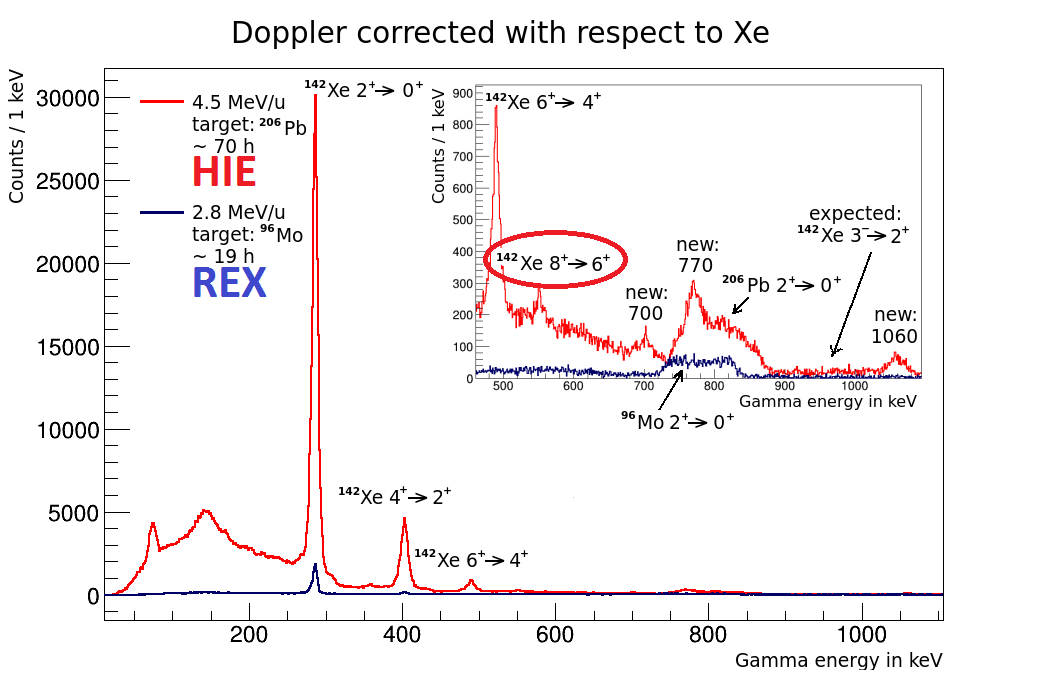Originally published in EP News.
There was an air of celebration at CERN on Wednesday 28th September as nearly 100 invited guests gathered to mark the successful completion of phase 1 of the HIE-ISOLDE project, which aims to provide higher intensity and energy beams, up to 5.5 MeV/u, at ISOLDE. The first radioactive ion beams, which had been eagerly awaited by the ever-expanding ISOLDE scientific community, were produced on 9th September 2016. The event, organised to celebrate this significant milestone, was attended by the CERN management and the Belgian State Secretary for Scientific Policy, E. Sleurs, as well as CERN delegates, funding agency representatives and senior scientists from the now 18 member states of the ISOLDE collaboration.
The HIE-ISOLDE event was hosted by B. Blank, the ISOLDE Collaboration Committee Chair, and M.J.G. Borge, the ISOLDE Physics Leader and spokesperson. Fabiola Gianotti, Director-General, welcomed the guests to CERN and F. Bordry, CERN Director For Accelerators and Technology, gave the opening address. This was followed by a presentation by M.J.G. Borge about the ISOLDE facility, the wide range of nuclear physics research that takes place at ISOLDE and the opportunity to address new physics questions that the new energy window will provide. Y. Kadi, the HIE-ISOLDE project leader, then explained how phase 1 of the project had been achieved with successful collaboration and funding from CERN, the ISOLDE Collaboration and external sources, such as the Belgian Big Science programme, the Spanish Industry for Science programme and the EU CATHI Marie Curie Initial Training Network, as well as the CATE Consortium, which is an EU interregional program IV. The Belgian Secretary of State, E. Sleurs, congratulated the collaboration on the successful completion of phase 1 and gave an overview of the Belgian contribution to projects at CERN, in particular ISOLDE and MEDICIS. She expressed her pleasure at seeing how the investment in R&D had been so fruitful and announced a continuation of Belgian funding programmes. Guests were then given a tour of the ISOLDE facility and had the chance to meet young, dynamic members of the ISOLDE community, who were at hand to present the experiments in which they are involved. The event came to a close with the guests visiting the Synchrocyclotron and the new CERN Microcosm exhibition.

Figure 2 3D layout of the HIE-ISOLDE post-accelerator as it looks in 2016. The REX-ISOLDE post-accelerator is at the right and two high-beta cryomodules are installed downstream of REX. Two beam transfer lines take the post-accelerated beam to the experiments: beamline XT01 is connected to the MINIBALL array and XT02 to the SEC scattering chamber. Top left: photo of the HIE-ISOLDE linac as taken in May 2016, with two cryomodules. Bottom right: layout of MINIBALL and photo of SPEDE, the electron spectrometer built in Jyväskylä.
The 2016 campaign with post-accelerated beams started on September 9th, accelerating a beam of the semi-magic (Z=50) 110Sn to 495 MeV (4.5 MeV/u). This first experiment addressed the determination of the transition probabilities 2+à0+ that seems to differ strongly from the theoretical expectation in the light tin isotopes. The second one addressed the evolution of the quadrupole and octupole collectivity in 142Xe when going away from the double magic 132Sn. This was the heaviest nucleus accelerated in 2016. The figure shows the Doppler corrected gamma spectrum of excitation of the 142Xe beam at 4.5 MeV/u on a lead target compared with the equivalent spectrum obtained with REX (2.85 MeV/u) energies. With the new energies, states up to 8+ spin-parity are populated in multi-step Coulomb excitation. Following the studies done last year with 74,76Zn, Coulomb excitation of 78Zn (N=48) at 4.3 MeV/u on platinum and lead targets was studied. The aim is to understand the nature of the N=40 shell closure and how strong and large in the shell gap around the double magic 78Ni (Z=28, N=50). The next step was to take the superconducting cavities to maximum accelerating gradient to explore the collective 2+ and 4+ states of the double magic 132Sn (Z=50, N=82) at 5.5 MeV/u in order to get information on the two particle-two-hole cross shell configurations. The energies for each experiment were chosen to maximise cross section and at the same time to ensure that the dominating and almost exclusive process was Coulomb excitation, which interaction is well known. These experiments were performed in the beamline XT01, see figure 2, and used the workhorse MINIBALL gamma array and a combination of CD-type Si detector with the T-REX one called C-REX, both installed in the first beamline for ejectile identification. Then, the second beamline, XT02, was commissioned and at the same time used to study the resonant states in the unbound nucleus 10Li populated by transfer reaction (d,p) of a 9Li beam at 6.8 MeV/u on a deuterated target, all realised in the scattering chamber SEC. The last experiment was dedicated to the study of the gamma-ray strength function of neutron rich nuclei in inverse kinematics. An unexpected increase in the gamma strength function at low energy has been observed in stable nuclei using the Oslo method and this enhancement could be of astrophysical relevance, if confirmed in exotic nuclei. For the first time, the Oslo method was used to study the gamma strength of exotic nuclei combining the MINIBALL array with innovative LaB3 detectors. Thanks to the completion of HIE-ISOLDE stage 1, this year we have dedicated 26% of the ISOLDE beam time to nuclear structure reactions for the first time since 2012.

Figure 3 Doppler corrected gamma ray spectrum of 4.5 MeV/u 142Xe beam Coulomb excited on 206Pb target (in red) and the equivalent gamma spectrum for 2.8 MeV/u 142Xe beam on a 96Mo target (in blue).
The HIE-ISOLDE project will go on to achieve energies of 7.5 MeV/u next year and 10 MeV/u before the start of the 2018 campaign, completing stage 2 of the energy upgrade. This will expand even further the possibilities for experiments at ISOLDE and keep the facility at the forefront of nuclear physics research.